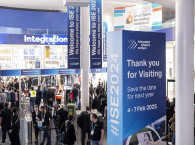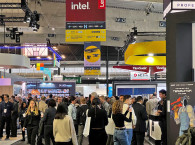I returned from Barcelona, Spain, after five exhausting days, which were not easy for anyone in the audio industry who was forced to fly from the NAMM Show in Anaheim, CA directly to Europe. At least it was not as cold in Barcelona as last year, and at least it was sunny after the first two days. Of course, the hotels in Barcelona continue to be obscenely expensive and booking one is an exercise in exasperation for months (and I'll stop here with my rant against Barcelona, although I will keep alerting for it for as long as it takes).
The 2024 NAMM Show was excellent, and the pre-pandemic "party" spirit returned, which is good news. There's nothing like the NAMM Show (especially now with no more Musikmesse - I miss you Frankfurt!). But with a mammoth of a show like ISE almost overlapping, it was only natural that there would be fewer international attendees - the exhibits were basically manned by the US crews. For European manufacturers that needed to be at NAMM, it was a strong demonstration of commitment to a completely different market sector that is not represented at ISE: music and entertainment applications. Mike Klasco promised to offer a report of what the NAMM 2024 experience was like, but I finished the ISE report first.

The 20th Anniversary!
This was the 20th edition of Integrated Systems Europe (ISE) and I have attended 19. I saw the show appear when the market was screaming for a "systems integration" show due mainly to the IT/networking convergence, when audio, video, lighting control, security, intercom, HVAC control, and every other installation disciplines for the smart home, and in offices, buildings, and public spaces started to use wired computer networking cables. It was a small show in Geneva, but it made immediate sense with the IT/IP future dangling above the heads of professionals doing installations.
Audio was at the core of this trend from the onset because there was a lot of technological evolution involved in audio installation disciplines, in part because of the emergence of wireless systems. Video was much less exciting. It was all still RGB and VGA and DVI... and mainly to do with feeding projectors and displays, which were only exciting because of HD (1080p) - HDMI would arrive soon after but more for the residential segment. But that was what was then considered "AV" - a subclass in systems integration, below "professional audio" and "professional video," which covered technical infrastructure from studio to broadcast. What really made a difference at Integrated Systems Europe was the emergence of two completely new industries: unified communications (and collaboration later) and digital signage.
Anyway, I believe I already paid tribute to the excellent work of the Integrated Systems Event team that conceived Integrated Systems Europe in my extensive report from ISE 2023, which is available here. Still, it is important to remember that ISE is supported by its associations and shareholders - Custom Electronic Design and Installation Association (CEDIA), Audio Visual and Integrated Experience Association (AVIXA - formerly InfoComm International.
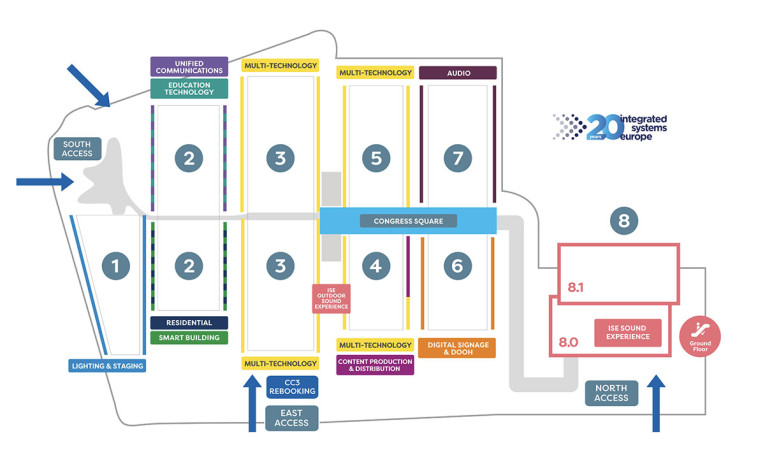


What Was That?
The important thing is to look at ISE 2024 and recognize how significant a trade show it has become, and the importance of the trends defined there. The systems integration sector is now a completely different landscape than it was in 2004. Companies now cover all installations disciplines in a more or less integrated form. The aforementioned "pro" audio and video sectors are now smaller markets than the "integrated systems" business. The so called "Pro AV" industry is in itself an important segment, given that there are many fixed installations that extend to all application fields, and that is why it makes sense for many companies in content production to also attend this trade show.
This year, even the entertainment lighting sector embraced ISE, given that most companies in that segment also do fixed installations, architectural lights, and even displays, apart from scenography - which is what most "AV" installations are these days. And when the "show light" manufacturers embrace a show like this, that signals that ISE is now an all-encompassing business environment, where the pro audio companies will feel comfortable showcasing their most powerful PA systems, and not only fixed installation versions. Will ISE ever replace trade shows that focus on live performance, music, and artistic production, like NAMM or (what used to be) Prolight+Sound?
I don't believe so.
Touring, rental, and stage crews want to be where musicians are (that is what killed Prolight+Sound with the end of Musikmesse), and they have business models that are unstable, unpredictable, and many times of very high risk (also of very high profitability when successful). Rentals are particularly peculiar. Not attractive at all for "systems integration" companies that like predictable and highly manageable operational and business plans. It doesn't mean that consolidation in the larger companies in this space doesn't invite expansions in either direction, through mergers, acquisition, and diversification - particularly following the catastrophic cancellation of all live entertainment activities caused by the pandemic. As a screaming example, Clair Global now includes Clair Global Integration, a growing business division very often mentioned at ISE 2024.
ISE 2024 was so successful in its expansion that it already used 80% of the space available at the Fira Barcelona complex. And because it already attracts many different installation segments and industries, it doesn't need to expand to "unfriendly" territory such as live music. In fact, this year's ISE benefited from not including weird things like the "IoT World Congress." It doesn't need it. That is for me an important take from this year's show - it shouldn't try to diversify more.


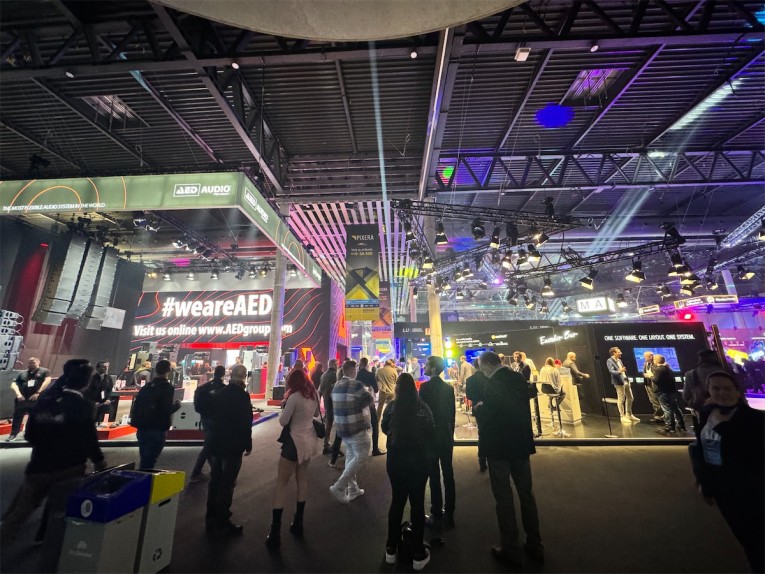
Why Is It So Big?
Integrated Systems Europe would always need to be bigger than the InfoComm and CEDIA shows combined. I predicted that in the early days of the trade show in Amsterdam, because of the unique characteristics of business in the European Union and even before it was clear that ISE would expand to Europe, the Middle East, and Africa (EMEA) and even beyond (Asia and South America). Originally, the plan was to have similar events in Asia, the Middle East, and elsewher. Now, ISE should be renamed Integrated Systems Expo because it is truly a global show.
Every single booth at ISE is massive compared with what the same brands do at InfoComm or CEDIA. And that's because exhibitors need to accommodate all their distributors and industry partners, apart from integrators and customers. Just the distributors’ "lounges" are bigger than the booths at InfoComm, with the need to accommodate staff from 27 countries of the European Union, who speak 24 different languages, plus the rest of the world. When you add all the staff required per booth to support this structure, it's not surprising that in some areas, one cannot even approach the product exhibits.
This year, during some scheduled press tours on the first two days, it was impossible to see, touch, and much less hear what was being presented. ISE is a press-friendly show because the organization understands this and provides the right environment and resources for us to do our work. That was also a trademark of ISE since inception.
To understand also what is sustaining the growth of ISE, we only need to look at the largest exhibitors and the official sponsors. Who are they and why are they here?
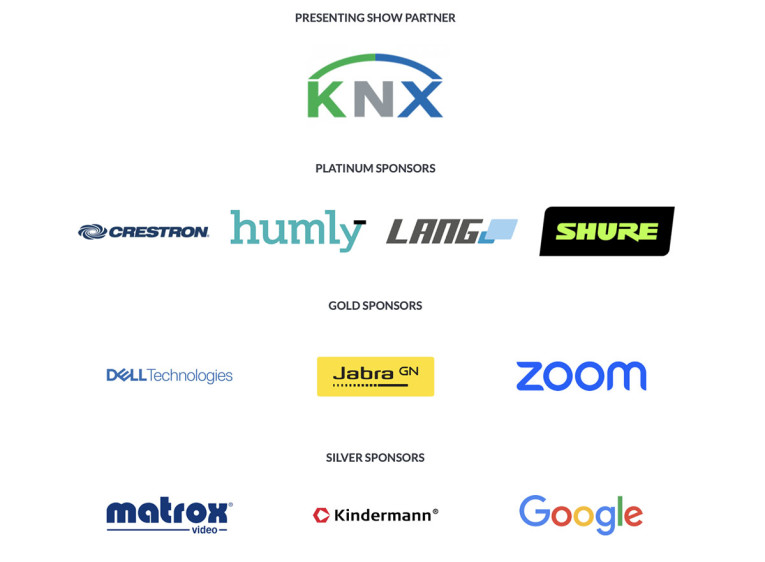
Crestron and Shure are Platinum sponsors, and they don't need introduction. But Shure at ISE is a completely different company from the Shure we see at NAMM. If you don't know Humly and LANG, that's probably because you never visited ISE, but that's OK. Humly is a Swedish company that specializes in Workplace Solutions - meaning products for office spaces, from access control to security. They are now a global company, and they are extremely organized, as you would expect. If you want to book a meeting, you need to use their solutions.
LANG is a German company (not to be confused with the manufacturing machinery company of the same name) that excels in bringing event and presentation production technology into the installation field. They are also a European reseller for the professional AV market working with all leading global audio and video manufacturers. They excel in custom integration, and they also develop anything they need to create immersive spaces in museums or exhibitions or any type of corporate event. Doing a large, spectacular booth at trade shows is pure routine for LANG.
As for the ISE 2024 Gold sponsors we see Dell, Jabra, and Zoom. They are there mainly because of conference systems, which is a growing segment for ISE, propelled by the hybrid work and work-from-anywhere trend. On the Silver sponsors list, we find Google (they are at ISE because of the UC&C solutions, selling anything that starts with Chrome, and something else only they understand). Matrox is the Canadian company that is synonymous with video for AV (not broadcast) and a key technology player when it comes to industry-defining technologies, specifications, and even standards.
And we have Kindermann. Kindermann is a German company (founded in 1861!) and a leading supplier in the systems integration space, acting both as a manufacturer and distributor (they resell Bose). They act in conferencing, collaboration, and connectivity applications and are able to deliver full project support - from planning to equipment and integration.
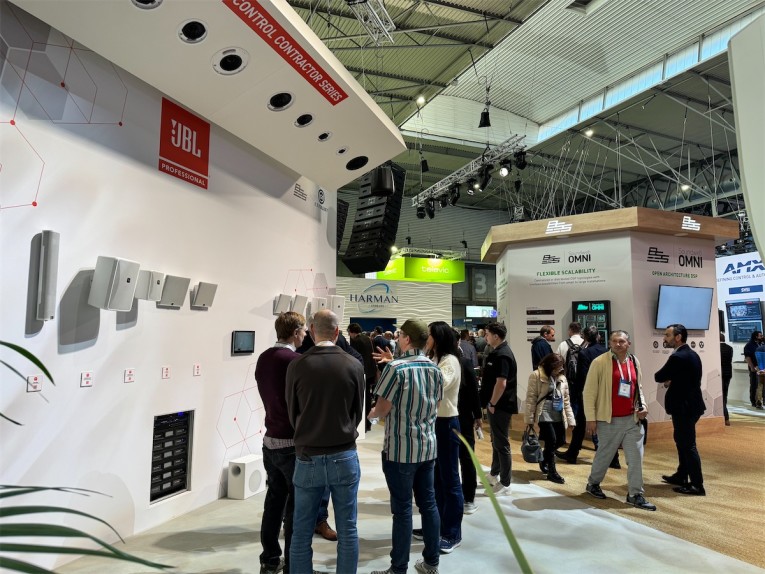
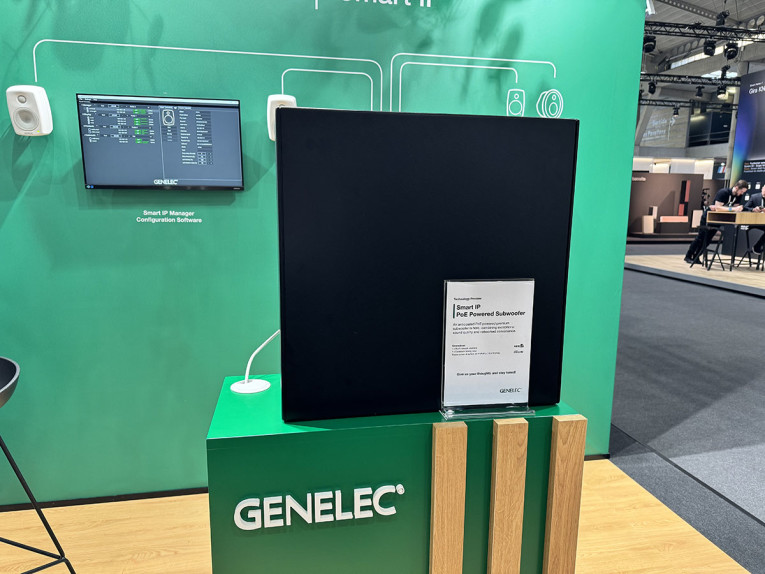
This should provide a great sample of the types of businesses that sustain ISE and how diverse this show is. As I wrote in my previous reports, Integrated Systems Europe is a different show to many people, depending on their business focus. Those that get excited with transparent screens and tactile meeting room control panels have a blast at ISE!
To throw in a bit of perspective I'll mention a release I received from a company called Mimo Monitors, experts in small touchscreen displays, which recently conducted research with integrators around the United States "to uncover the trials, tribulations, and challenges often facing the industry." According to their research, 58% of integrators in the technology space say that keeping up with rapidly changing technology is their primary concern and pain point. Which means that they need to go to trade shows more, and that ISE is essential for these companies - even when they do creepy stuff we would rather not know about.
But let's go back to how big ISE is becoming. Integrated Systems Europe became officially larger than the US InfoComm and CEDIA shows combined in its 2016 edition. The show was already very successful and attracting record attendance due to its convergence of Residential, Commercial, and Unified Communications solutions. That year, the RAI Amsterdam Exhibition Centre expanded to accommodate more than 1,300 exhibitors - and in 2017 an additional hall and pavilion were added using adjacent areas of the complex. With the show evolving from a three-day to a four-day format, registered attendance in 2016 was 65,686. That number surpassed 80,000 registered attendees and 1,301 exhibitors in 2019, making it the largest edition... before the pandemic.

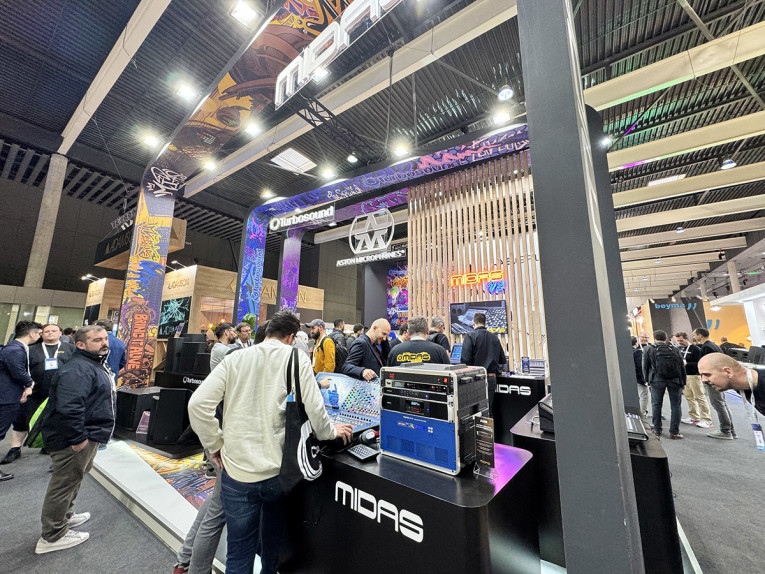
ISE 2024 Breaks all Records
So, let's dive into the measurable success of the show since it moved to Barcelona. After a rehearsal year in 2022 - with COVID still raging, forcing the show to be held in May - 2023 was the first post-Amsterdam edition to be worth comparing, with 58,107 certified unique attendees from 155 countries - not bad at all, considering there were still very few visitors from China, Asia, and the Americas.
Integrated Systems Events has been very careful at providing numbers of registrations and final certified attendees. As a clear measure of growth and success, this year the Fira de Barcelona Gran Via venue received 73,891 unique verified attendees from 162 countries, a record since the show’s inception in Geneva in 2004. This represents an increase of 27% on the 2023 edition. On the Wednesday (January 31), second show day, ISE had already welcomed 51,617 visitors, the highest number ever in a single day. The total number of registrations in 2024 reached 95,396.
The exhibition itself showcased its highest number of exhibitors, with 1,408 booths and the largest show floor space. Everyone I spoke to (as it happened in 2023) confirmed the quality of the attendance, the quality of the meetings, and the business. That was the reason why everyone I talked to was already trying to increase their booth size or move to a better location in 2025. Also, the last remaining "just-walking-the-show" companies visiting ISE have confirmed that they will have a booth, meeting room, demo room, or a mixture of those.
That type of pressure was visible on the rebooking, with many lighting companies asking to join and requesting the ability to suspend heavier structures from the halls’ structures, which is motivating a reshuffle of the halls for next year. The pro audio section in Hall 7 is moving to the two halls 8.0 and 8.1 (exhibition and demo rooms), while lighting will take Hall 7. Which means that ISE 2025 will be the first edition to occupy the whole area of the Fira de Barcelona complex - not expected in just two years, even considering that the aisles are significantly larger in Barcelona than they ever were at the RAI in Amsterdam.
It is only appropriate to quote Mike Blackman, Managing Director of Integrated Systems Events describing this success: "In the illustrious 20-year journey of ISE, we have witnessed the transformative power of innovation and collaboration within our community. ISE 2024 not only reflects the cutting-edge technologies defining our industry but also serves as a testament to the enduring spirit of creativity and camaraderie. As we celebrate this milestone, alongside our co-owners AVIXA and CEDIA we look forward to continuing our commitment to being a global platform for industry professionals."
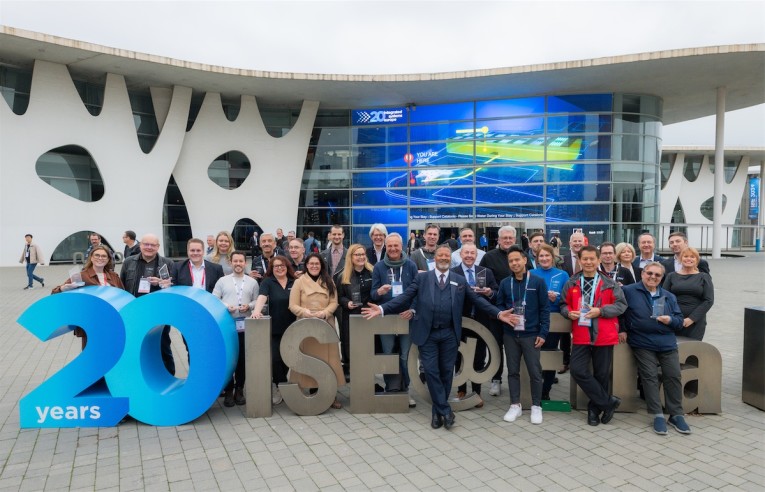
Media Network Fragmentation
OK. So, what about audio, you ask? Well, that requires a lot more than this newsletter, but you can get a sense of the audio innovations in our continuous coverage online. There's so much in audio combined at this show, that it would be impossible to just describe the main topics. I'll focus on one, which I believe is the foundation of Integrated Systems, and - as mentioned in my introduction - helped propel this trade show to the stratosphere: networking.
When you thought that audio-over-IP would be a mature topic in 2024, ISE is there to demonstrate that we've never been further from a standard, never mind an "open standard." While Dante is still by far the leading audio networking technology (and a great solution for hundreds of audio manufacturers), AES67, Ravenna, ST 2110, and others, are much less mentioned by companies at ISE. All those networking protocols and standards are very prevalent in the CEDIA-space hall, and in the pro audio hall of the show. But in every other hall, there is instead again a trend to promote "proprietary is better" networking approaches (new and old).
Companies at ISE 2024 even bring back their own proprietary network protocols that one would assume would be dead and buried by now. Typically, all the booths would show you the "Dante" approach (because they must) and "Our Own Net" flavor solution. And to make things worse, because of this trend where ISE is trying to agglutinate all other audio application fields and now also added content production and live performance systems, there were even companies promoting the zombie of all networks, which is AVB/TSN.
Of course, AVB/TSN is now disguised as Milan, promoted as a new protocol supported by five leading manufacturers of live sound and touring products (L-Acoustics and Meyer Sound, and - reluctantly - Adamson, Avid, and d&b audiotechnik). Launched almost 10 years ago, Milan is promoted as "made for" pro audio applications, and now pitched also for media systems as we've seen at ISE. Of course, no matter how many engineering companies are involved (Luminex, Joyned, Auvitran, AllDSP), Meyer Sound AVB systems will continue to work only with Meyer Sound systems, and L-Acoustics with L-Acoustics, which was always their interest and intention.
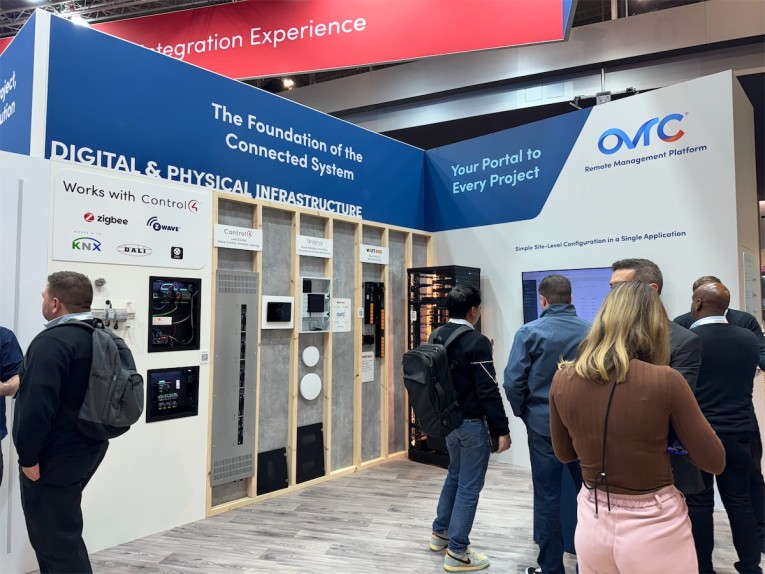
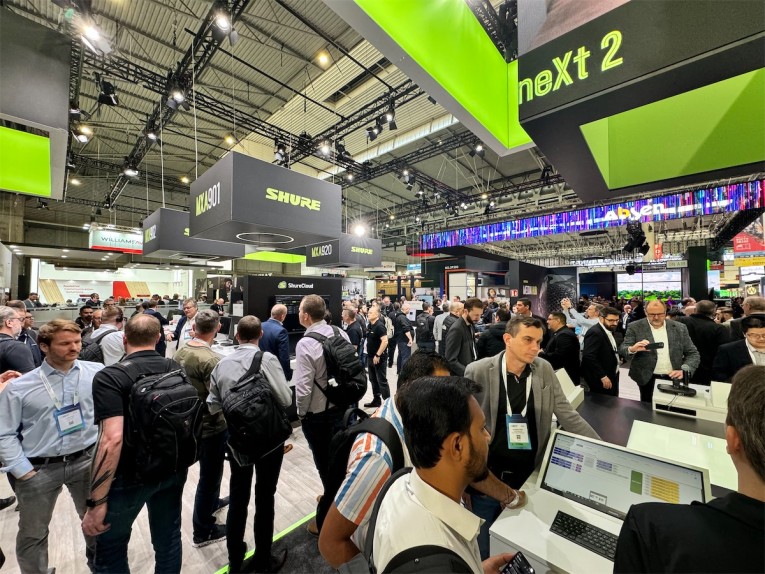
Audio networking implementations over AVB/TSN, and particularly the current Milan efforts, are an attempt to keep pushing dedicated hardware and avoid standardization. Are Dante, Ravenna, AES67, or SMPTE ST 2110 solutions perfect? Far from it. They are complicated, anything but intuitive, missing the key control layer that the OCA/AES70 efforts can offer (which Milan says it is embracing...). But they rely on advanced and widely available IP/IT technologies that create a multi-vendor ecosystem. And more importantly, they are interoperable, tried-and-tested solutions to do everything that AVB/TSN/Milan is still promising to do.
Milan is the latest attempt to put lipstick on the AVB pig, which is not even good for bacon. And now, at ISE, the Avnu Alliance member companies (an organization founded to promote AVB) are trying to pretend that Milan is also an "AV Network" solution. Of course, Audinate is also investing heavily in a futile attempt to convert its successful audio networking technology into an "AV-networking" solution. And because of that, the Audinate booth was nowhere to be seen, lost in a corner in Hall 3 with other video companies.
While Ravenna/AES67 are technologies based on true open standards, and Dante is a technology with real market traction, being the dominant audio networking de facto standard, AVB/TSN is not even gaining traction in industrial and automotive applications - which were touted always as the technology's largest potential market. Not surprisingly, Microchip - one of the largest silicon companies still listing AVB/TSN devices in its portfolio - had a small booth close to the Avnu Alliance booths.
Not that AVB/TSN (and Milan, for that matter) doesn't have its merits. Like all audio networking technologies, originally, it had its benefits and strengths, which meanwhile the layer 3 "open" standards over IP such as Ravenna/AES67 and even Dante have surpassed. From the industry standards-efforts point of view, the audio industry needs Milan as much as it needs another global pandemic (vade retro).
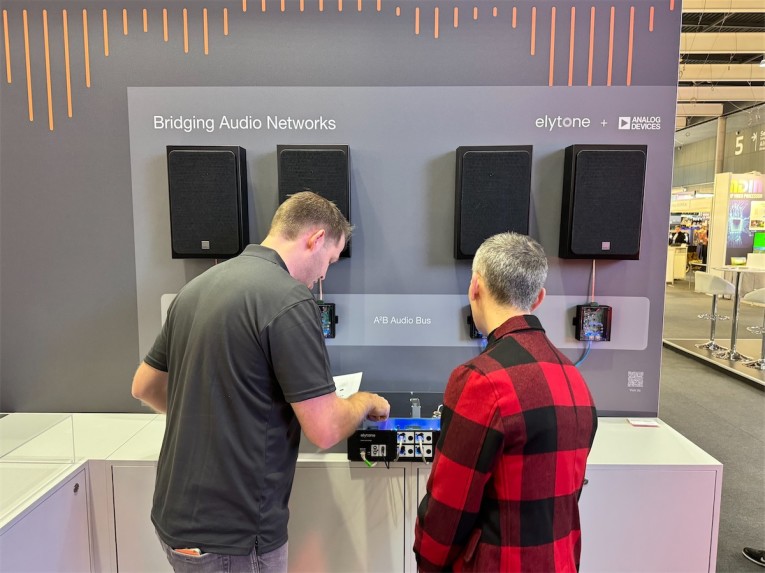
But the problem is, like ISE brought this "AV" focus to the front, also the consortiums promoting the much-needed audio networking standard have diverted to futile efforts to create "let's pipe some video to feed the projector," instead of expanding existing technologies (and standards) already adopted by the professional video and broadcast industry. The result, is that now we have multiple companies promoting different types of AV for media networks, including Dante AV, IPMX, and others, pretending that SMPTE standards and even NDI don't exist, and freezing any progress that was much needed for audio networking.
Audio networking technologies are far from being complete or even practical to use. They are all still too complicated and require "IT-centric" approaches that we know from experience are not friendly and healthy for anyone. And the practical result is an immensely fragmented technology landscape as we could see once again at ISE 2024 - where companies continue to be characterized by Plug and Pray... or Plug and Pay.
My prediction for 2025 is that we will continue to see the expansion of "de facto" standards such as NDI, and we will see the emergence of new/old technologies, perfected for modern applications. One of those being the latest iterations of A2B, of which I saw much more promising demonstrations at ISE 2024 than anything else. Yes, Automotive Audio Bus (A2B) - a true standard in automotive audio applications (unlike AVB/TSN).
Analog Devices' A2B is probably one of the most promising audio technologies available for multichannel digital audio in musical instruments, studio, and stage applications, which Analog Devices continues to perfect and support. After 40 years of efforts, it seems we didn't get the audio-over-IP standard we all dreamed of, and we will be likely stuck with a fragmented market for a while. But if any technology has a chance to become the next standard for audio transport, that's A2B.
But that is a topic for future articles.
ISE returns to Barcelona, February 4-7, 2025, nine days after NAMM Show 2025. Good news. aX
This article was originally published in The Audio Voice newsletter, (#456), February 8, 2024.




